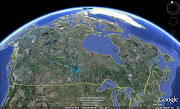Source: Rural Futures Institute.
The University of Nebraska seeks a visionary and dynamic leader for the position of founding Executive Director of the newly established Rural Futures Institute. Founded in 1869, the University of Nebraska (NU) is a four-campus public land-grant university that serves the people of Nebraska through quality teaching, research, outreach, and engagement.
NU comprises the land-grant and comprehensive research campus in Lincoln, the medical center in Omaha, the University campus in Omaha, and the Kearney campus as well as research, extension, and service facilities statewide. NU employs approximately 13,000 people and enrolls approximately 50,000 students.
The new Rural Futures Institute (RFI) is a groundbreaking, innovative and ambitious effort to redefine the land-grant mission of the University of Nebraska in 21st century terms. Envisioned as a model for how public universities and individuals from a range of different disciplines can interact with their communities and regions, RFI aims to be the world’s premier university-based program to provide research-based information, facilitation, and learning opportunities to enable rural people to create genuine economic opportunity, vibrant communities, and better and more sustainable rural futures. A university-wide, multidisciplinary institute, RFI is committed to improving economic opportunity and increasing community capacity as well as the confidence of rural people to address their challenges and opportunities. Building upon the strengths and assets in rural Nebraska, the Great Plains, and globally, the RFI, through a culture of innovation and entrepreneurship, will mobilize the resources and talents of the University and its partners to create knowledge and action that supports rural people and places to achieve unique paths to their desired futures. Initially RFI will be housed on or near the University of Nebraska-Lincoln campus, but it is expected that its research, programs, and engagement activities will involve all of the University’s campuses.
As the founding chief executive, the Executive Director will have the unique and exciting opportunity to develop a premier research, education, policy and engagement institute that has positive impact on building resilient and sustainable rural futures. S/he will provide leadership, strategic direction, and oversight for the Institute’s mission, initiatives, and activities. The Executive Director’s primary charge is to establish the Institute as a global leader in rural Futures through the development of local, regional, national and international partnerships with the public and private sectors and the pursuit of collaborative opportunities. The Executive Director will report to NU Vice President & IANR Harlan Vice Chancellor of the Institute of Agriculture and Natural Resources and be advised by a small Board of Directors. The Executive Director will be expected to oversee the development of a strategic action plan with milestones and metrics for measuring progress; build a core team; and build the internal relationships, processes for local and regional collaborations, and external partnerships with communities that will be central to the work of RFI.
The successful candidate may come from a background of substantive leadership within the academic community; relevant federal, state and county agencies; foundations that are interested in rural issues; research institutes; community organizations; community development agencies; non-profit organizations or the business sector dealing with rural issues or economic development. S/he must have appropriate academic credentials and a demonstrated record of accomplishing results through the development and facilitation of collaborations and partnerships. The Executive Director will demonstrate inspirational leadership skills, strategic thinking, strong communications and servant leadership abilities, great collaborative and teamwork skills, a high degree of organizational skill, entrepreneurial instincts, creativity, a passion for rural America, the ability to ensure that initiatives and programs achieve their desired results, a global mindset, and a track record of commitment to diversity and to building diverse teams. The Executive Director will be able to create networks that leverage a broad array of regional resources and build strong relationships with other regional university partners, grassroots, organizations, community residents, and statewide, regional, national and international organizations. In building this new entity, the Executive Director must be able to catalyze the immense enthusiasm for this project and its potential in serving the University, the state of Nebraska, and the world.
The University of Nebraska has retained the services of Diversified Search for this assignment. Screening will begin immediately and continue until an appointment is made. All communications will be treated confidentially. Nominations, inquiries, and applications (including a cover letter, curriculum vitae, and the names of five references) should be directed electronically in confidence to Nebraska.RFI@divsearch.com.
For further information, please contact:
Kim M. Morrisson, Ph.D. Managing Director and Practice Leader
Manuel A. Gongon, Jr., Principal
Diversified Search
2005 Market Street, Suite 3300, Philadelphia, PA 19103
215-656-3588
Full description.
WWW: http://ruralfutures.nebraska.edu














